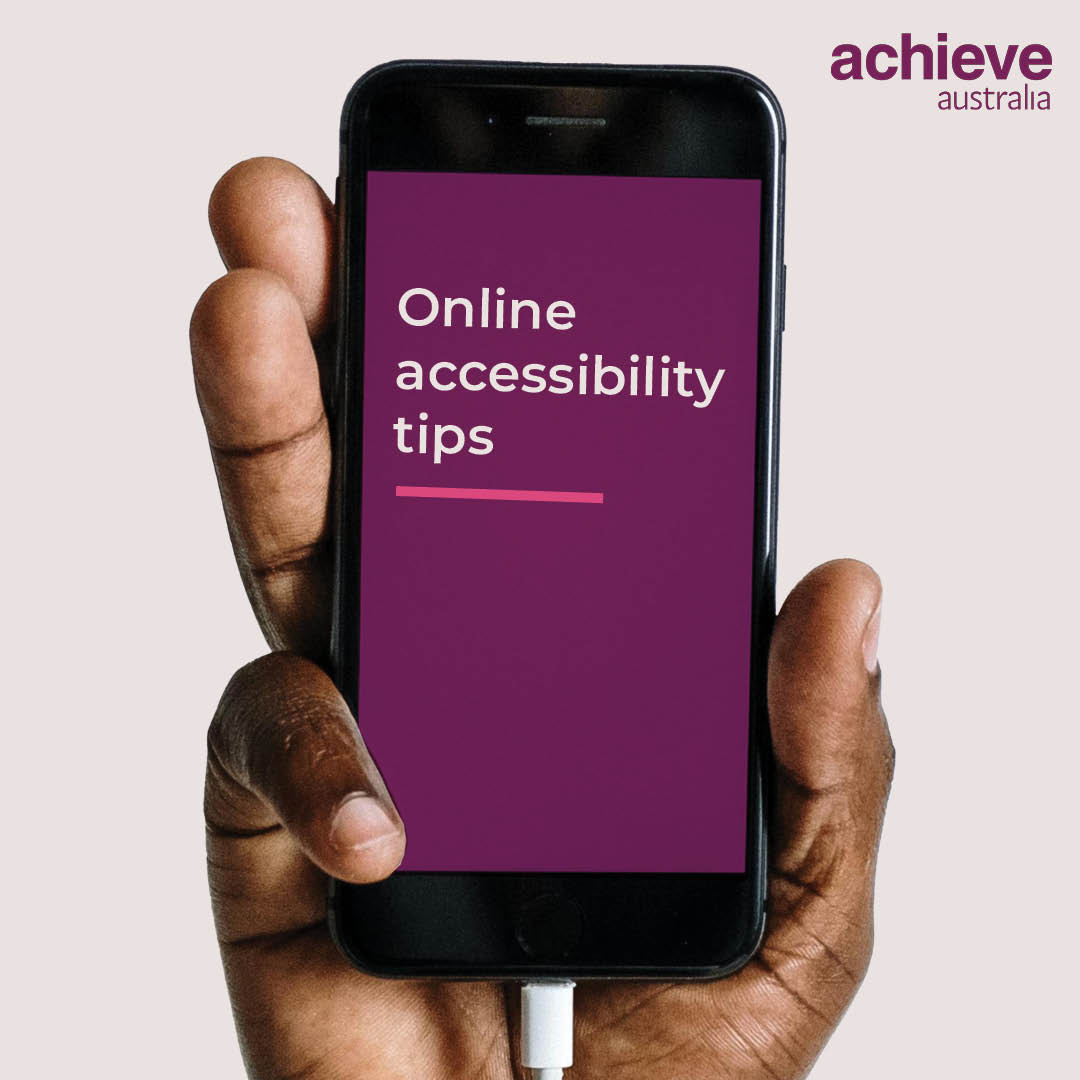13 March 2024
Ever wondered how to be accessible online? Well, accessibility is more important than ever. With the rise of remote work and virtual events, ensuring your content is accessible to all users is crucial. From closed captioning videos to alt text for images, there are many ways to make your online presence inclusive.
Read on to hear our online accessibility tips to help you create more inclusive online spaces.
Hashtags
Have you ever struggled to read a hashtag because all of the worlds are jumbled together? Us too! And screen readers are the same. For people with vision impairment, screen readers are an invaluable tool in supporting them to navigate the online world. However, hashtags that have not been written in an accessible way cannot be read by screen readers.
So how can you write accessible hashtags? Easy! The trick is to capitalise the first letter of each word so that a screen reader can differentiate one word from the next.
Here’s an example:
#notaccessiblehashtag
#AccessibleHashtag
Let’s be honest, this is a helpful tip for anyone to be able to better read hashtags. Accessibility benefits everyone, and this is no exception. Next time you’re writing a hashtag for your post, remember to make sure you are making it accessible for everyone.
Don’t overuse emojis!
We all love emojis, they are a fun way to communicate expression online. But have you ever wondered what a text-to-speech software does when it is reading emojis? You guessed it… it reads aloud a description of each one.
So, unless you want your Facebook status to read like this:
“Just got back from holidays! Norway flag flag of Norway, sunrise over mountains, snowflake, leaf fluttering in wind, smiling face with heart eyes”
Be selective with how many emojis you include in a post.
Alt text
Alt text (alternative text) describes the appearance or function of an image on a web page. Alt text is read aloud by screen readers which are used by people with visual impairments and low vision.
When uploading photos online, it’s important to add alt text so that they are accessible. Here’s how.
Closed captions
This one seems obvious, but all videos should have closed captions/subtitles to make them accessible. Not only does this mean that people with disabilities will be able to access your video, it means that it can be watched without sound.
Social media platforms like Instagram and TikTok make this easy by autogenerating captions for videos. CapCut is a video editing tool that will also generate auto captions. However, make sure to check and edit these to make sure they’re correct, as an unclear audio could result in some pretty funny subtitles.
All in all, accessibility online is beneficial for everyone, and should be the standard for when we are creating content online. Next time you are sharing your holiday pics on Facebook, or making a funny TikTok, remember these accessibility tips so they can enjoyed by all.
Written by Anna Pettifer, Digital Marketing and Communications at Achieve Australia
Explore more topics
- 2023
- disability
- inclusion
- YESequality
- belonging
- disability employment
- Accessible
- Community
- NDIS
- 2022
- Achieve Australia
- people with disability
- Accessibility
- Meet our Achievers
- The Sewing Basket
- blog
- travel
- women with disability
- Advocacy
- Art
- Australia
- COVID-19
- Disability services
- Employment
- Good nutrition
- Health tips
- Mental wellbeing
- NDS
- Sharing milestones
- Sydney
- achievable
- assistance dogs
- depression
- disability communications
- disability inclusion
- election
- employee of the year
- intellectual disability
- motherhood
- pregnancy
- social inclusion
- support workers

